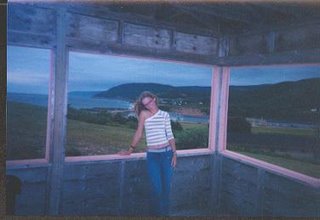I had a small scare this week when I noticed a small red circle beginning on my mastectomy scar and protruding upwards about .5cms. It was moreso a mark than a bump. But, why would a red mark suddenly be forming on the mastectomy scar four months after the operation? The scar had already healed and was even fading in colour now. It had to mean something. As soon as I noticed the mark, I went to the internet to find some answers. What is a local recurrence? When does a local recurrence normally happen? What does it look like? I found out that local recurrence (a recurrence in the breast where cancer was already removed) happens in 10% of patients who had a lumpectomy and 1% of patients who had a mastectomy. It usually happens within the first 3-5 years and is normally a result of cancer cells that were 'left behind' after surgery (in other words, an unsuccessful surgery). In those who have had a lumpectomy, local recurrence normally presents itself in the form of another lump in the breast. In mastectomy patients, it will normally be a lump on the chest wall OR redness/ blistering/ bump at the mastectomy scar.
OH NO. What if this is a recurrence? This would be EXACTLY my luck. A thousands thoughts trickled through my mind. My heart fluttered. I showed my mother the mark. I showed my father the mark. I showed Mike the mark. All of them thought it was noticeable and that I should mention it to the doctor, but none of them seemed to think I should be overly concerned about it. My mind raced. I checked my appointment book. February 8th, 9:45 am: appointment with Dr. Butler. Perfect. I decided that I would not rush this and overreact because it would really do nothing for me anyway. Because I am still technically on chemotherapy, my cell counts are too low for for me to receive an operation. So, if the doctors were to discover that I had a local recurrence, there would be nothing they could do about it until well after my treatment ended anyway. I may as well try and forget about it, relax, and just ask Dr. Butler next week when I see him.
As the week passed, the redness of the mark diminished, as did my nervousness. I went into the appointment confidently to meet with Dr. Butler. The first thing he wanted to do was give me a breast exam and take a look at the scar to be sure it was healing properly. Perfect. I showed him the mark immediately and his only reply was: "Nope that's normal ... just a bit of scar tissue forming there that's all. Nothing at all to worry about." Ahhhh. I could take a deep breath and be happy. I am assuming this will be the first of many MANY scares I will have in the years ahead of me. Recovering, both mentally and physically, and dealing with the remnants of this disease, is a whole battle in its own.
Dr. Butler was then interested in knowing more about the letter he received from Dr. MacCormick, which was about my interest in receiving a prophylactic mastectomy of the right breast. He told me, just as Dr. MacCormick did, that this was something I would need to decide on my own, but he would be supportive of whatever decision I would make. He went on to say that if I do decide that this is the way I want to go, that he would try to arrange a mastectomy with immediate reconstruction, something which is quite rare in this geographic location. Dr. Butler had previously told me that this type of surgery didn't happen around here because they simply did not have the resources available. So, he was once again going above and beyond for me. I felt so grateful. Dr. Butler has done so much for me since all this began.
What does this mean? Dr. Butler would make arrangements so that he, Dr. Atiyah (the plastic surgeon), and the anesthesist would all meet in the OR for my arranged operation. Dr. Butler would remove the breast and, immediately following, (under the same anesthetic) Dr. Atiyah would insert the implants to begin the breast reconstruction. This would save me an extra operation and the negative effects of being under anesthetic too often. It would also get the most difficult part of the reconstruction out of the way. To read in more detail about the type of reconstructive surgery Dr. Atiyah has suggested for me, read the post Twins or Sisters?
Dr. Butler suggested having the surgery sometime in the next 3-6 months, between June and August, so we scheduled another appointment for May, when we will discuss my intentions and a specific surgery date further.
When I left the appointment I felt very relieved and even excited. The appointment made me feel more like I was moving on, and Dr. Butler's reassurance that Dr. Atiyah's work is excellent and the results look very nice made me anxious to have the procedure. As I thought about things more and more, I came to the conclusion that a prophylactic mastecomy and reconstruction would provide me with the most peace of mind for my future. And, being reassured that after receiving this surgery I could still have breasts (although not natural), made me feel all the more confident in my decision.
Subscribe to:
Post Comments (Atom)





No comments:
Post a Comment